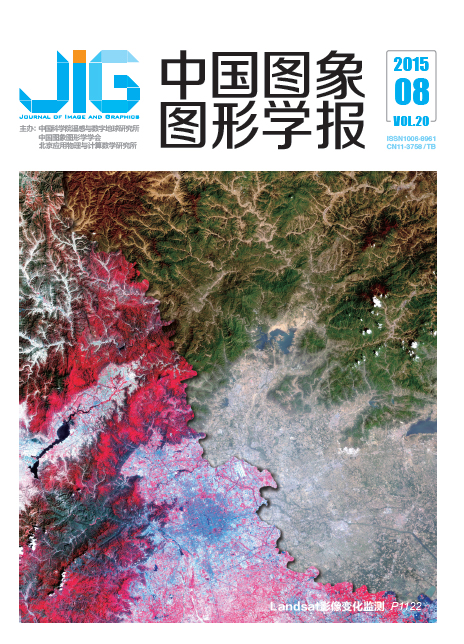
时空运动显著性的目标跟踪
摘 要
目的 在目标跟踪过程中,运动信息可以预测目标位置,忽视目标的运动信息或者对其运动方式的建模与实际差异较大,均可能导致跟踪失败。针对此问题,考虑到视觉显著性具有将注意快速指向感兴趣目标的特点,将其引入目标跟踪中,提出一种基于时空运动显著性的目标跟踪算法。方法 首先,依据大脑视皮层对运动信息的层次处理机制,建立一种自底向上的时空运动显著性计算模型,即通过3D时空滤波器完成对运动信号的底层编码、最大化汇集算子完成运动特征的局部编码;利用视频前后帧之间的时间关联性,通过时空运动特征的差分完成运动信息的显著性度量,形成时空运动显著图。其次,在粒子滤波基本框架之下,将时空运动显著图与颜色直方图相结合,来衡量不同预测状态与观测状态之间的相关性,从而确定目标的状态,实现目标跟踪。结果 与其他跟踪方法相比,本文方法能够提高目标跟踪的中心位置误差、精度和成功率等指标;在光照变化、背景杂乱、运动模糊、部分遮挡及形变等干扰因素下,仍能够稳定地跟踪目标。此外,将时空运动显著性融入其他跟踪方法,能够改善跟踪效果,进一步验证了运动显著性对于运动目标跟踪的有效性。结论 时空运动显著性可以有效度量目标的运动信息,增强运动显著的目标区域,抑制干扰区域,从而提升跟踪性能。
关键词
Spatio-temporal motion saliency for object tracking
Xie Zhao, Liu Yumin, Zhang Jun, Duan Shilei(School of Computer and Information, Hefei University of Technology, Hefei 230009, China) Abstract
Objective During object tracking, motion information can predict the location of the object. If motion information is ignored or motion is inaccurately modeled, then tracking may fail. To deal with this issue, we introduce visual saliency, which can quickly capture the interesting object, in tracking. Furthermore, we propose a tracking algorithm based on spatio-temporal motion saliency. Method First, we propose a bottom-up computational model for spatio-temporal motion saliency according to the hierarchical motion processing in the visual cortex. We adopt 3D spatio-temporal filters for the coding of underlying motion signals and max-pooling operation for the coding of local features. Considering the temporal relationship between the spatio-temporal motion features in the historical and current frames, we construct the spatio-temporal motion saliency map by measuring the difference between consecutive frames. Second, in the frame of particle filter, we measure the correlation between the predictive state and the observation by combining spatio-temporal motion saliency with color histogram. The object state can then be determined and tracked. Result Compared with other methods, our approach can stably track the objects under unfavorable situations, such as variable lighting, background clutter, motion blurs, occlusion, and deformation. We can improve the tracking performance in terms of central position error, precision, and success rate. In addition, we integrate the spatio-temporal motion saliency into other tracking methods and achieve better results, which demonstrates the effectiveness of the spatio-temporal motion saliency for object tracking. Conclusion The spatio-temporal motion saliency can improve tracking performance as it measures motion information effectively, thereby enhancing the salient area and suppressing interference.
Keywords
|



 中国图象图形学报 │ 京ICP备05080539号-4 │ 本系统由
中国图象图形学报 │ 京ICP备05080539号-4 │ 本系统由